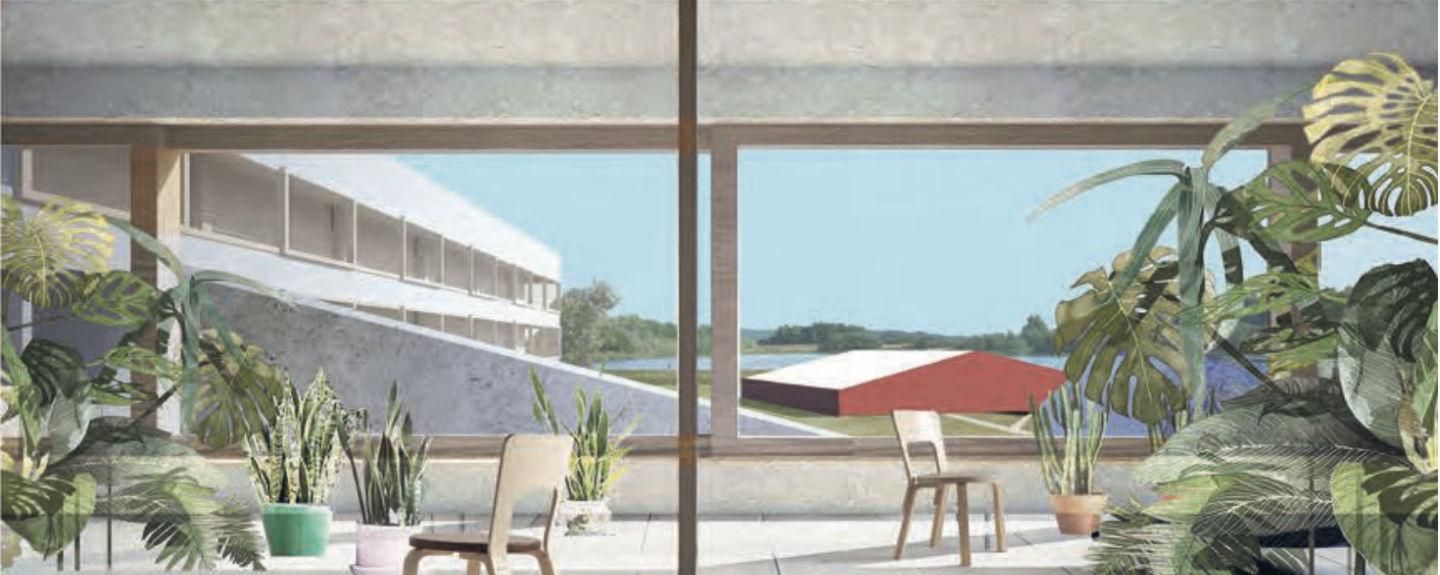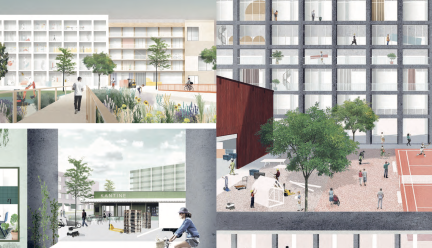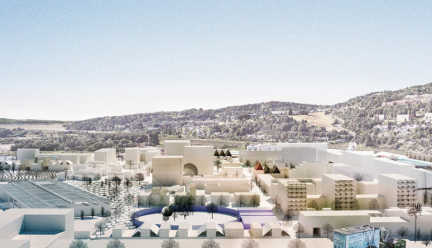Project:
Fictions

About
-
We wish to design a new fictional city, a new urban structure that can frame the nature, the social and the postindustrial. A superstructure of thin cross blocks on pilotis will overlap the site trying to preserve as many industrial preexisting buildings as possible. This new urban cluster will also step back from the first river frontline so that area can be restored as complex healthy eco-system.
The superposition of radical new cross block structure entwined on the fabric of a preexisting industrial city in an area with such natural potentials will define a fresh new urban landscape.
The cross-shape geometry of the new blocks defines clear spaces that one will be able to recognize as a urban frame to the new fictional scenarios. Every four crosses create a public inner courtyard. Each of these courtyards will have a unique and specific character based on the pre-existing industrial landscape and the natural potentials. Each courtyard will enclose a different fictional natural landscape. One will house a autoctonous riverside flora; another will house autoctonous trees from the northern forests; a third one would house a much more drastic tundra like landscape, and some other will be defined by the post-industrial heritage; but each and every and every courtyard will become a different and unique landscape for the citizens to recognize and enjoy. A collage of FICTIONS.
-
The project superimposes an elevated second layer on top of the existing industrial landscape, a structure consisting of cross-shaped block structures with housing and new working places. The existing industrial structure on the ground is almost kept like it is and instead of removing it, the authors add the block layer with new functions such as apartments and new working spaces. This layer has its own structural matrix that reminds of Le Corbusier ́s Ville Radieuse. A third layer of ramps and bridges are introduced to connect the elevated cross-blocks with the structure on the ground.
Although the authors describe a programmatic transformation of the industrial ground structure, the jury wants to accentuate that the scheme also can be read as a concept that shows how production and residential housing can co-exist. This, however, requires an understanding of how the different parts of the industrial processing are interconnected and which restrictions the different parts have. From this point of view the layering represents a way of thinking, or a design strategy, which contributes to the discussion on how industrial processing can be supplemented with new functions. The jury finds the reference to Ville Radieuse, together with the elevated superblocks, challenging the discussion of urbanity, quality of living and urban spaces. The consequent concept of layering result apparently in a formalistic and little flexible scheme (one size fit) without any advises for phasing.
-
Albert Palazon (ES), architect
CONTACT
Albert Palazon
Carrer Rosselló 157-159 6e 2a 08036 Barcelona.
Albert Palazon
Related projects
-

The Living City
The goal of the project is to develop a neighborhood where modern manufacturing processes,…
-

Fictions
The project aims to recognize and highlight the reality of these three main actors: nature,…
-

Techno Monks
By proposing a model based on productive monasteries, the bound- aries between production, display,…